▼ Judicial Performance Index to check delayed cases [08-31-17]
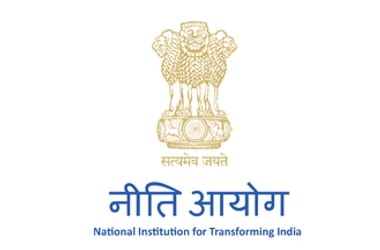 The Niti Aayog has suggested introduction of a ‘judicial performance index’ to check delay in trial and address the issue of pendency of cases. The Niti Aayog has suggested introduction of a ‘judicial performance index’ to check delay in trial and address the issue of pendency of cases.
Asserting that corruption cases get held up in the judicial system inordinately, the policy think-tank has also recommended putting a time-limit for processing them.
In its draft three-year action agenda (for 2017-18 to 2019-20), the Aayog has suggested several judicial reforms.
This is including increasing the use of information and communication technology, and streamlining judicial appointments.
The draft was circulated among the Niti Aayog’s Governing Council members (consisting of chief ministers of all states and others) on April 23.
It takes eight years to finalise a major vigilance case from the date of occurrence of irregularity and underlined the need to speed up decision - making process in corruption cases.
The judicial system is another avenue where corruption cases get held up. Delays in obtaining justice encourage the corrupt and discourage those who are honest.
Beyond the larger reforms in the justice system to reduce pendency, special courts set up to try corruption cases should be strengthened and time limits to process corruption cases should be introduced.
The report has also suggested introduction of a ‘judicial performance index’.
Such an index could be established to help high courts and high court chief justices keep a track of performance and process improvement at the district courts and subordinate levels for reducing delay.
This would require fixing non-mandatory timeframes for different types of cases as broad guidelines to benchmark when a case has been delayed, it said.
|
▼ IAEA opens Kazakhstan Uranium Bank [08-30-17]
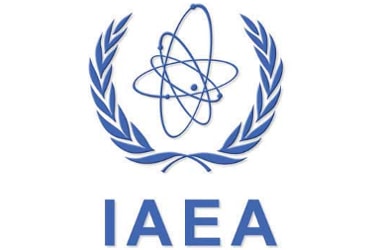 The International Atomic Energy Agency (IAEA), the UN global nuclear watchdog, opened a uranium bank in Kazakhstan on 29th Aug 2017 a $150-million facility. The International Atomic Energy Agency (IAEA), the UN global nuclear watchdog, opened a uranium bank in Kazakhstan on 29th Aug 2017 a $150-million facility.
This is designed to discourage new nations from enriching the nuclear fuel.
The Low Enriched Uranium (LEU) Bank in the city of Oskemen, in eastern Kazakhstan, will store up to 90 tonnes of the fuel, enough to power a large city for three years, and sell it to IAEA members if they are unable to procure it elsewhere.
The LEU Bank will serve as a last-resort mechanism to provide confidence to countries that they will be able to obtain LEU for the manufacture of fuel for nuclear power plants in the event of an unforseen, non-commercial disruption to their supplies.
Countries such as Iran have said they need enrichment facilities to ensure a steady supply of fuel for nuclear power plants, and the idea behind the bank is to make such supply available without domestic enrichment.
Russia has operated a similar bank since 2010 but the one in Kazakhstan will be the first one fully owned and operated by the global nuclear watchdog.
|
▼ First Videsh Bhavan in Mumbai launched [08-29-17]
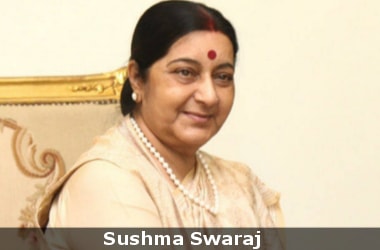 External Affairs Minister Sushma Swaraj on 27th August 2017 inaugurated the country's first Videsh Bhavan in Mumbai. External Affairs Minister Sushma Swaraj on 27th August 2017 inaugurated the country's first Videsh Bhavan in Mumbai.
The country's first Videsh Bhavan assimilates all Regional Passport Offices under one roof.
As a first pilot project, four offices of the MEA - Regional Passport Office (RPO), Protector of Emigrants (PoE) office, Branch Secretariat and Regional Office of the ICCR - have been assimilated and brought under one roof at the state-of-art office.
|
▼ GIZ Gmbh, MNRE and GoI sign agreement [08-29-17]
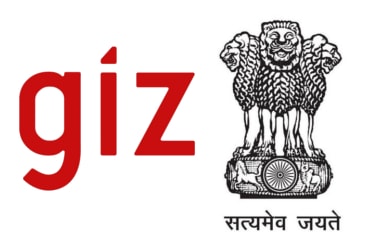 The Ministry of New and Renewable Energy (MNRE), Government of India and Deutsche Gesellschaft für Internationale Zusammenarbeit (GIZ) GmbH India on behalf of the Government of the Federal Republic of Germany signed an agreement. The Ministry of New and Renewable Energy (MNRE), Government of India and Deutsche Gesellschaft für Internationale Zusammenarbeit (GIZ) GmbH India on behalf of the Government of the Federal Republic of Germany signed an agreement.
This was on technical cooperation under the “Indo-German Energy Programme - Green Energy Corridors (IGEN-GEC)”.
The main objective of this programme component is to improve the sector framework and conditions for grid integration of renewable energies.
The agreement was signed by Dr. Wolfgang Hannig, Country Director, Deutsche Gesellschaft für Internationale Zusammenarbeit (GIZ) GmbH India and Mr. A.N. Sharan, Joint Secretary, Ministry of New and Renewable Energy (MNRE).
When in July 2012 Power Grid Corporation of India submitted a comprehensive and well elaborated “Transmission Plan for Envisaged Renewable Capacity” to MNRE it paved the way for India’s ambitious goals to transform its power system by significantly increasing the share of renewable energies in the energy mix.
Also in Germany’s “Energiewende” the evacuation and grid integration of renewable energy plays a pivotal role with major technological and fiscal challenges.
Both the countries have very constructive dialogue under the Indo-German Energy Forum (IGEF).
Being committed to this objective, GIZ and MNRE will work on improving market mechanisms and regulations for integration of Renewable Energies.
They will also work on advancing technical and institutional conditions in specified target states, regions and on a national level; adding human capacities to handle systemic (strategic, managerial, financial, technical) Renewable Energies integration in an efficient and effective manner.
IGEN-GEC Programme: Know More
- The IGEN-GEC programme is commissioned by the Federal Ministry for Economic Cooperation and Development (BMZ).
- It is jointly implemented by Ministry of New and Renewable Resources (MNRE), Ministry of Power (MoP), Government of India and Deutsche Gesellschaft für Internationale Zusammenarbeit (GIZ).
- This programme component supports the implementation of the Renewable Energy Management Centre (REMCs), Green Energy Corridors scheme of the Government of India which is a prerequisite for large scale grid integration of renewable energy thus contributing to achieve the 175 GW target of the Government of India for renewable energy generation capacity by 2022.
|
▼ NITI Aayog launches Ease of Doing Business report [08-29-17]
 The Survey was released by the Union Minister of Commerce Smt. Nirmala Sitaraman and Minister of Law & Justice and Electronics and Information Technology, Shri Ravishankar Prasad. The Survey was released by the Union Minister of Commerce Smt. Nirmala Sitaraman and Minister of Law & Justice and Electronics and Information Technology, Shri Ravishankar Prasad.
The Ease of Doing Business report based on an Enterprise Survey of 3,500 manufacturing firms Survey comes in the backdrop of the fact that India needs to create an environment that fosters globally competitive firms, capable of driving and sustaining economic growth.
|
▼ DARPG Grievance Study Analysis of 20 Ministries [08-28-17]
Ministry of Development of North Eastern Region (DoNER), MoS PMO, Personnel, Public Grievances & Pensions, Atomic Energy and Space released the Department of Administrative Reforms and Grievances (DARPG)’s Grievance Study Analysis of 20 Ministries.
Under the PM’s awards, young officers are now vying for excellence in implementation of priority programmes.
A number of grievances lodged has increased 5 fold in the last three years, from 2 lakh grievances in 2014 to 11 lakh grievances now.
Currently 28 ministries/departments are on e-office and steps are being undertaken to bring all ministries/departments on e-office by this year end.
The department is also developing Development Goal Manual and Good Governance Index.
For the PM awards to be presented on Civil Services Day 2018, the following four priority programmes have been identified: - Pradhan Mantri Fasal Bima Yojana
- Digital payment (digital payment under digitization)
- Pradhan Mantri Awas Yojana (Urban and Rural)
- Deen Dayal Upadhyaya Grameen Kaushalya Yojana
The officers will be rewarded under the ‘Anubhav’ initiative. There is also setting up of Pensioners Adalat to quickly resolve the issues of pensioners. The “Grievance Analysis & Systemic Reforms” Study was conducted for 20 ministries in the year 2015.
|
▼ South Korean gold and silver imports restricted [08-28-17]
 The government on 25th Aug 2017 restricted imports of gold and silver items from South Korea. The government on 25th Aug 2017 restricted imports of gold and silver items from South Korea.
This was in a bid to check spurt in inbound shipments of precious metals from that country.
The importers will now have to obtain a license from the Directorate General of Foreign Trade (DGFT) for importing gold and silver from South Korea.
These restrictions are being imposed against the backdrop of sudden surge in imports of precious metal from South Korea, with which India has a free trade agreement since January 2010.
Gold imports from South Korea has jumped to $338.6 million between 1 July and 3 August this year.
The import in 2016-17 stood at $70.46 million.
Under the free trade pact between India and South Korea, basic customs duty on gold was eliminated.
Further, the 12.5% countervailing duty on gold imports has been subsumed in the Goods and Services Tax (GST). Accordingly, the imports now attract only 3% integrated GST.
Imports of gold from non-FTA countries, attract 10% customs duty.
India is the world’s second biggest gold consumer after China.
The collections from customs duty and IGST from imports post implementation of GST has almost doubled to INR 30,000 crore in July.
Gold imports contributed significantly to this increased collection.
The revenue collected include those on account of customs duty, Integrated-GST (IGST) from imports, countervailing duty (CVD), special addition duty (SAD) and cess collection on imported items.
|
▼ TRAI, MCMC Ink pact [08-23-17]
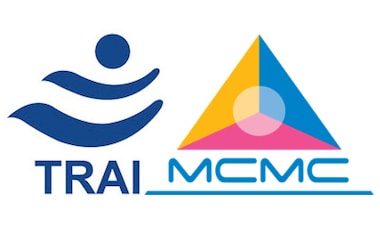 The Telecom Regulatory Authority of India has inked an agreement with the Malaysian Communications and Multimedia Commission (MCMC). The Telecom Regulatory Authority of India has inked an agreement with the Malaysian Communications and Multimedia Commission (MCMC).
This is to deepen bilateral cooperation in telecom and broadcasting regulation.
The two telecom regulators on 22nd Aug 2017 signed a letter of intent (LoI).
Under this, they will exchange information and regulatory best practices.
Trai chairman RS Sharma and MCMC chairman Halim Shafie were signatories to the pact.
This is a pact which will enhance cooperation and bilateral ties between the two entities.
The telecom regulators of India and Malaysia will also undertake joint capacity building exercises in telecom and broadcasting regulation.
It said the signing of this “historic agreement” is significant as both India and Malaysia can “learn from each other, and enhance mutual cooperation and bilateral relations”.
Collaboration is planned in various global fora “including but not limited to” the International Telecom Union, the Association of Southeast Asian Nations and the Asia-Pacific Telecommunity.
The pact came amid the ongoing Asia-Pacific regulators’ roundtable jointly organised by the International Telecom Union and TRAI.
|
▼ New state of matter discovered [08-22-17]
 Scientists have discovered a potential new state of matter. Scientists have discovered a potential new state of matter.
This may help explain phenomena like superconductivity.
Superconductivity is extensively used in magnetic resonance imaging (MRI), particle accelerators, magnetic fusion devices, and microwave filters.
Researchers from the Los Alamos National Laboratory in the US showed that among superconducting materials in high magnetic field.
This phenomenon of electronic symmetry breaking is common.
The ability to find similarities and differences among classes of materials with phenomena such as this helps.
It establishes the essential ingredient that cause novel functionalities such as superconductivity.
The high-magnetic-field state of the heavy fermion superconductor CeRhIn5 revealed a state in which the material’s electrons aligned in a different way.
These are in a way to apparently reduce the symmetry of the original crystal.
This something that now appears to be universal among unconventional superconductors.
Unconventional superconductivity develops near a phase boundary separating magnetically ordered and magnetically disordered phases of a material.
|
▼ The country’s first surrogate calf Vijay [08-22-17]
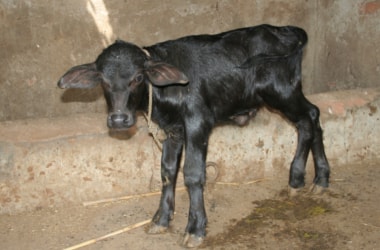 Vijay is the name of the country’s first calf delivered by a surrogate or recipient cow through In Vitro Fertilisation (IVF) technology carried out in a mobile laboratory. Vijay is the name of the country’s first calf delivered by a surrogate or recipient cow through In Vitro Fertilisation (IVF) technology carried out in a mobile laboratory.
In the past few years, indigenous cow breeds have been destroyed due to cross-breeding.
While in human beings, IVF technology comes to the aid when either of the couple is infertile, in the case of cows, our objective is to protect the breed in its original form.
In its lifetime (15 years on an average), a cow gives birth to 10 calves at the most.
Through IVF technology, it can give birth to 20 calves in a year through recipient cows, which means nearly 200 in its lifetime.
About 50 embryos can be produced by a donor cow in a year.
A similar experiment was carried out about five years ago by the National Dairy Research Institute at the lab-level.
This is the first time that the procedure was successfully implemented at a farm, with the help of a mobile laboratory.
The aim is to take the technology to the farmer.
The scientists carry out the entire procedure in front of the farmer, with their mobile IVF lab,
In Vijay’s case, the donor cow, Ratan, belongs to the Gir breed, whose population across the country is around one lakh currently.
Unevenly spread across Gujarat, Rajasthan and Maharashtra, on an average, it gives 10-12 litres of milk daily.
Under the JK Trust’s initiative, JK BovaGenix, aimed at promoting genetically superior indigenous cattle breeds, the oocytes, or immature eggs, of the donor cow were collected.
The oocytes were kept in a special incubator, which worked as an artificial uterus, for nearly 24 hours.
Meanwhile, semen was collected from a Gir bull. The process of fertilisation then began - in a petri dish inside the incubator, at a temperature of 38.5 degree centigrade.
After seven days, the oocytes developed into an embryo, which was transferred to the recipient cow.
The oestrus cycle in cows occurs every 21 days.
The embryo can be transferred to the cow seven days before its oestrus cycle. Its body will then accept it as its own embryo and the chances of pregnancy will increase.
Additionally the success rate of IVF technology in cows is 40 per cent and the procedure can be done on the donor cow at least 10-12 times in a year.
Other than Ratan, the oocytes of three more donor cows - one Gir breed and two Khillar breed - were collected in November.
The other three surrogate mother cows are due to give birth in the next two weeks.
Similarly, the oocytes of three cows (Tharparkar breed) that belong to Chandrakant Bharekar, who owns another ‘cow farm’ near Pune, were also collected.
The embryos were transferred to recipient cows in November.
These surrogate mother cows are expected to give birth this week.
At present, JK Trust has two state-of-the-art Embryo Transfer and IVF laboratories, known as Dr Vijaypat Singhania Centre of Excellence Assisted Reproductive Technologies in Livestock.
This is at Gopalnagar, near Bilaspur, in Chhattisgarh and Vadgaon-Rasai near Pune.
|
▼ Criminal justice system to be integrated with CCTNS database [08-22-17]
 Ministry of Home Affairs will undertake steps to integrate the various organs of the Criminal Justice System such as the Police, Courts, Prisons, Prosecution, Forensic Laboratories, Finger Prints and Juvenile Homes. Ministry of Home Affairs will undertake steps to integrate the various organs of the Criminal Justice System such as the Police, Courts, Prisons, Prosecution, Forensic Laboratories, Finger Prints and Juvenile Homes.
With the Crime and Criminal Tracking Network & Systems (CCTNS) database, the Interoperable Criminal Justice System (ICJS) will be a useful resource for all stakeholders including the policy makers.
Digital Police Portal will enable citizens to register FIRs online and the portal will initially offer seven Public Delivery Services in 34 States & UTs.
This is like Person and Address Verification e.g. of employees, tenants, nurses etc, permission for hosting Public Events, Lost & Found Articles and Vehicle theft etc.
Besides, the portal will enable restricted access to law enforcement agencies on topics such as Antecedent Verification and make assessment of FIRs.
Out of 15,398 Police Stations under the CCTNS project, 14,284 Police Stations are using CCTNS software.
The CCTNS portal will provide investigator the complete record history of any criminal from anywhere across the country.
The software offers Google-type Advance Search engine and analytical reports.
The portal offers 11 kinds of search and 44 types of reports.
Recently, the software was used to trace few mentally challenged women from Tamil Nadu in Uttarakhand and reunited with their families.
|
▼ Navika Sagar Parikrama: First circumnavigation of globe by all Indian women crew [08-18-17]
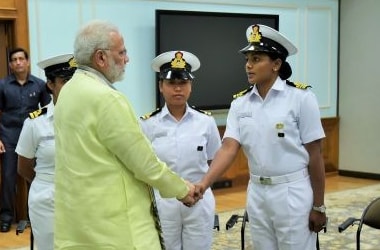 Navika Sagar Parikrama is a project wherein a team of women officers of the Indian Navy would circumnavigate the globe. The project is scheduled to commence in early Sep 17. Navika Sagar Parikrama is a project wherein a team of women officers of the Indian Navy would circumnavigate the globe. The project is scheduled to commence in early Sep 17.
This on an Indian-built sail boat INSV Tarini. INSV Tarini is the sister vessel of INSV Mhadei.
The project is considered essential towards promoting Ocean Sailing activities in the Navy.
This is also while depicting Government of India’s thrust for ‘Nari Shakti’.
The first Indian Solo circumnavigation was undertaken by Capt Dilip Donde, SC (Retd) from 19 Aug 09 to 19 May 10. This was onboard the Indian built vessel, INSV Mhadei.
The first Indian non-stop solo circumnavigation was undertaken by Cdr Abhilash Tomy, KC from 01 Nov 12 to 31 Mar 13.
INSV Tarini, a 55 foot sailing vessel has been built by M/s Aquarius Shipyard Pvt Ltd, Goa.
Tarini was inducted into the Indian Navy on 18 Feb 17. The vessel has sailed approximately 8,000 Nm till date.
Navika Sagar Parikrama would be covered in five legs with stop-overs at four ports.
Additional aims of the Expedition are as follows:-
a. Nari Shakti - In consonance with the National policy to empower women to attain their full potential, the expedition aims to showcase ‘Nari Shakti’ on the world platform.
b. Environment and Climate Change - Sailing encourages the use of environment friendly non-conventional renewable energy resources which affects the life of women.
c. Make in India - The voyage also aims to show case the ‘Make in India’ initiative by sailing onboard the indigenously built INSV Tarini.
d. Meteorological/ Ocean/ Wave Data Observation - The crew would also collate and update Meteorological/ Ocean/ Wave data on a daily basis for subsequent analysis by research and development organisations.
e. Marine Pollution - The crew would monitor and report marine pollution on the high seas.
f. Interaction with Local PIOs - Since the expedition aims to promote Ocean Sailing and the spirit of adventure, the crew would interact extensively with the local PIOs at the various port halts.
|
▼ 27312 Asian elephants in India: Elephant Survey [08-18-17]
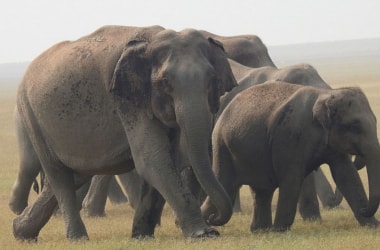 Preliminary results from the first-ever synchronised all-India Elephant Population Estimation pegs India’s Asian elephant population at 27,312. Preliminary results from the first-ever synchronised all-India Elephant Population Estimation pegs India’s Asian elephant population at 27,312.
The estimate, derived from the sighting-based direct count method alone, will be confirmed with estimates from the indirect dung-count method in three months.
According to the report, released by the Ministry of Environment, Forests and Climate Change on August 12, Karnataka has the highest number of elephants (6,049).
This is followed by Assam (5,719) and Kerala (3,054).
The numbers are lower than from the last census estimate in 2012 (between 29,391 and 30,711).
But experts say parallels cannot be drawn, because in the 2012 count, various states used different methodologies and the effort was not synchronised across the country;
The errors and duplication could have led to overestimation.
This time, a number of indices, including birth rate, indicate that the elephant population is increasing.
Due to habitat fragmentation, elephants are moving out to agricultural landscapes leading to an increase in man-elephant conflict.
The census, conducted between March and May this year, covered 1.10 lakh square kilometres and spanned four regions of the country: the northeast, east-central, south and north.
The Asian Nature Conservation Foundation (ANCF) at the Indian Institute of Science (Bengaluru), several NGOs and independent conservationists aided the Project Elephant Directorate and forest departments of 23 states in this exercise
|
▼ China, Nepal sign pacts in power, energy economic sector [08-17-17]
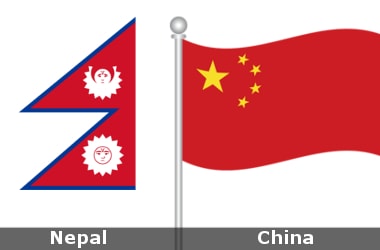 China and Nepal have signed three pacts to boost their ties further in power, energy and economic sectors. China and Nepal have signed three pacts to boost their ties further in power, energy and economic sectors.
The signed agreements covered oil and gas resources exploration, economic and technological cooperation and promotion of investment.
The agreements were signed after visiting Chinese Vice-Premier Wang Yang held discussions with Nepal's Deputy Ministers Bijaya Kumar Gachhadar and Krishna Bahadur Mahara.
1. The agreements covered three different areas
a. Economic and technological cooperation
b. Framework agreement on promotion of investment and economic cooperation
c. China-aid oil and gas resource survey project
2. The pacts also included a feasibility study for excavating natural gas and petroleum in mountain areas and plains of Terai region of the Himalayan country.
3. They will help make significant contributions in Nepal's socio-economic transformation.
4. Both countries also agreed to establish hydropower projects and transmission lines and take steps or technological development in Nepal, which is suffering from an acute shortage of electricity.
5. China also agreed to upgrade 114-kilometre Araniko highway, which is an old route connecting two countries, which was damaged and subsequently closed after the massive 2015 Nepal earthquake.
|
▼ India to get first rail disaster management village [08-16-17]
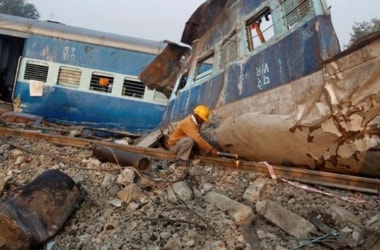 Trains falling into rivers and coaches catching fire will be common sights in the country’s first ‘railways disaster management village’ expected to come up on the outskirts of Bengaluru by December 2018. Trains falling into rivers and coaches catching fire will be common sights in the country’s first ‘railways disaster management village’ expected to come up on the outskirts of Bengaluru by December 2018.
The “overaged rolling stock” will be used to replicate train accidents so that real time rescue operations could be carried out to improve such efforts.
It will be just like the mock drills carried out by security personnel. It will be as real as it can get.
The railways has earmarked the 3.32 sq km village of Hejjala, with a population of 3,483 people, to develop its Disaster Management Institute and Safety village at a cost of INR 44.42 crore, according to the blueprint accessed by PTI.
For augmenting theoretical class room training with practical hands on exercise, a real environment for training in various conditions and scenarios of train accidents, a concept of safety village was envisaged.
The focus is on imparting state of the art training on rescue, medical relief and rolling stock restoration techniques in a classroom and also using various simulated teaching aids.
However, it is the practical reproduction of accidents on site and the ensuing rescue operations that are being touted as the big ticket venture.
For the practical training as a part of the safety village tunnel, cutting, embankment, other conditions and obstructions like overhead structures and platforms are being created.
For carrying out underwater rescue and relief operations, a water body is also being developed.
Overaged rolling stock such as coaches, wagons and locomotives would be stationed in the safety village along with various tools and equipment for imparting hands-on practical training, the concept note said.
The village, about 25 km from Bengaluru, will also have a virtual reality centre for analysis of railway accidents.
The centre aims at providing training on dealing with various disasters under varied environment and terrain.
Construction work has begun and will be completed by December next year.
|
▼ Live twitter wall for Bharat Ke Veer launched [08-16-17]
The Union Home Minister Shri Rajnath Singh launched the live twitter wall for promoting Bharat Ke Veer portal on the eve of Independence Day 2017.
On this occasion, Shri Rajnath Singh and Ministers of State for Home Affairs Shri Hansraj Gangaram Ahir and Shri Kiren Rijiju contributed their one month salary for Bharat Ke Veer.
Shri Rajnath Singh said that the Security Forces have made supreme sacrifice in the line of duty and the people need to stand by their families to support them.
This social media awareness campaign will display all tweets with hashtag Bharat Ke Veer (#BharatKeVeer), at Connaught Place, CGO complex and Khan Market in New Delhi where huge LED display screens have been installed.
Emoji has also been created for this hashtag.
Union Home Secretary Shri Rajiv Mehrishi, OSD Shri Rajiv Gauba and Senior Officers of MHA were present on this occasion.
Bharat Ke Veer portal was launched by the Union Home Minister and actor Shri Akshay Kumar on April 9, 2017.
This portal facilitates online donation directly to the families of CAPF Martyrs who have sacrificed their lives for the country in line of duty from January 1, 2016.
|
▼ New company paintings exhibition launched [08-14-17]
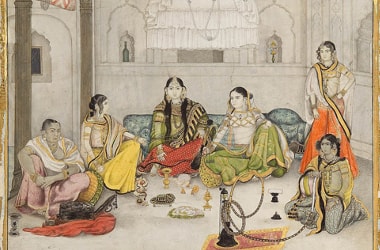 Smt. Sujata Prasad, Additional Secretary, Ministry of Culture inaugurated an exhibition “Indian Historical monuments in Company Painting School” in Ajanta Hall, National Museum, New Delhi on 12th Aug 2017. Smt. Sujata Prasad, Additional Secretary, Ministry of Culture inaugurated an exhibition “Indian Historical monuments in Company Painting School” in Ajanta Hall, National Museum, New Delhi on 12th Aug 2017.
The exhibition will remain open to the public till 27th August, 2017.
The exhibition presents illustrated paintings on Indo-Islamic Monuments with scenes of Mughal Architectures made with photo realistic approach.
The National Museum took a new initiative on a “Small Temporary Exhibition” from its reserve collection.
The exhibitions will be based on several themes, so that it will attract large number of visitors to view new artefacts every fortnight.
Through such programme National Museum is trying to draw visitor’s attention and allows them to experience the collection on many significant art pieces of reserve storage, which generally remains out of focus.
The first temporary exhibition was on “Traditional Headgear of India” from the Decorative Arts department.
This exhibition arranged to showcase printed turban, embroidered dopalli and Maratha stitched cap and zardozi cap specially designed for occasional and ceremonial bases.
This exhibition “Indian Historical monuments in Company Painting School” will present illustrated paintings on Indo-Islamic Monuments with scenes of Mughal Architectures made with photo realistic approach.
Company Paintings: Know More
- In the eighteenth and nineteenth centuries India witnessed a new genre of painting popularly known as ‘Company School’ as it emerged primarily under the patronage of the British East India Company.
- The British officers trained Indian artists in British water color style for documenting Indian daily life scene, monuments, art and culture in the form of Paintings for carrying out as souvenir to their homes while returning to the England.
- Some of these Company Paintings are illustrated with scenes of Mughal Architectures. As these painting were part of documentation most of these architectures are painted in full profile such as Red Fort of Delhi (1639-48 CE) and Taj Mahal (1630-48 CE) while a few of them depict only important part of the monument for highlighting special features like Interior of the Tomb of Itimad-ud-Daula.
|
▼ 1000 PMBJP kendra centres to open in UP [08-11-17]
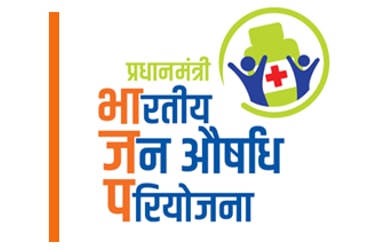 A Memorandum of Understanding (MoU) was signed between the Union Government and the State Government of Uttar Pradesh for opening 1000 Pradhan Mantri Bhartiya Janaushadhi Pariyojana (PMBJP) Kendras in the State. A Memorandum of Understanding (MoU) was signed between the Union Government and the State Government of Uttar Pradesh for opening 1000 Pradhan Mantri Bhartiya Janaushadhi Pariyojana (PMBJP) Kendras in the State.
The ceremony took place in the presence of Minister of Health of Uttar Pradesh Shri Siddharth Nath Singh and Minister of State for Health, Dr. Mahendra Singh, in Lucknow.
The Bureau of Pharma PSUs of India (BPPI), under Ministry of Chemicals and Fertilizers, signed the MoU on behalf of Government of India with State Agency for Comprehensive Health and Integrated Services (SACHIS) representing Government of Uttar Pradesh.
Government’s priority under the PMBJP scheme is to provide quality medicines at affordable rates to the poor and marginalized sections of society.
The drugs available under this scheme meet the highest quality benchmarks and are made available by the Government at costs much less than their expensive branded counterparts.
Cardiac stent costs have been reduced by almost 85%, which would benefit poor patients who could not afford them earlier.
Under the PMBJP scheme, more than 600 medicines and 150 surgical and other medical items are being made available at affordable rates at Janaushadhi Kendras opened across the country.
The number of medicines available under the scheme would soon be increased to 1000.
Government of India is also giving financial assistance of up to INR 2,50,000 to those who open the Kendras under the scheme.
1000 stores will be opened in government hospitals and community health centres, so that more and more poor and marginalized sections of society can get benefit of this scheme.
Kendras will be opened in Hospital complexes and allotment of around 400 Janaushadhi Kendras has taken place.
The website of the PMBJP Scheme for the State was also inaugurated during the event.
This website would aid the people to know more about the scheme, location of the Janaushadhi Kendras, availability of medicines and their prices in real time.
|
▼ Indian national anthem now in sign language for hearing impaired [08-11-17]
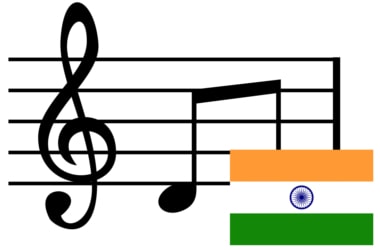 Dr Mahendra Nath Pandey, Minister of State, Ministry of Human Resource Development launched the Indian National Anthem video in sign language at Films Division Auditorium, New Delhi on 10th Aug, 2017. Dr Mahendra Nath Pandey, Minister of State, Ministry of Human Resource Development launched the Indian National Anthem video in sign language at Films Division Auditorium, New Delhi on 10th Aug, 2017.
The video features actor Amitabh Bachchan along with children with disability singing the National Anthem in sign language at the backdrop of the Majestic Red Fort.
The film is conceptualised by Satish Kapoor, Founder Director, We Care Film Festival.
We Care Film Festival produced the Film under the aegis of Brotherhood, an NGO.
It is directed by Govind Nihalani and the music is scored by late Aadesh Shrivastava.
India’s development will be complete when our divyangjan become an integral part of it and come forward in the nation building.
The term 'divyang' (divine body) instead of 'viklang' must be used for persons with disability.
We must create an environment for the disabled people by which they can be able to earn a livelihood and live an independent life like any other citizen.
The decision on reservation in vacancies in government establishments to increase it from 3% to 4% for certain persons or class of persons with benchmark disability is one such instance.
|
▼ Coconut palm - Goa’s state tree [08-10-17]
 The state cabinet on Wednesday gave its approval to amend the Goa, Daman and Diu Preservation of Trees Act, 1984 for inclusion of coconut palm as tree and ‘state tree’. The state cabinet on Wednesday gave its approval to amend the Goa, Daman and Diu Preservation of Trees Act, 1984 for inclusion of coconut palm as tree and ‘state tree’.
It was also for exempting commercial tree plantations from the provisions of the Act.
As per the cabinet note, the state government has decided to include coconut palm as tree in the Goa, Daman and Diu Preservation of Trees Act, 1984 to regulate felling of coconut trees.
In the 2008 amendment to this Act, a new Section 1-A was inserted to include coconut as tree under the Act, but was omitted later in amendment done in 2016 as it was leading to some confusion.
Hence, it is now deemed appropriate to include coconut palm in the definition of the tree under Section 2(j) in Chapter 1 of the Act.
The government has also decided to declare coconut as ‘state tree.’
Since there is no provision at present in the Act to declare a tree as a ‘state tree,’ a new Section 7A, which shall define the ‘state tree,’ is being included.
Further, there is no special provision in case a horticulturist/farmer wants to replace existing coconut trees, which are non-productive or which can cause damage to property and endanger lives.
Hence, a new Section 8A after Section 2 is proposed to be included to appoint agriculture officers and issue guidelines for management of coconut plantations for aforesaid purpose.
The cabinet note stated that further, there is no existing provision to exempt commercial tree plantations from the provisions of Goa, Daman and Diu Preservation of Trees Act, 1984, which may have been discouraging people from raising plantations of commercially profitable tree species.
Hence, it is proposed to insert a new Section 32A exempting cultivation for commercial plantations, with appropriate guidelines.
|
▼ Niti Aayog to transform health and education sector in selected states [08-9-17]
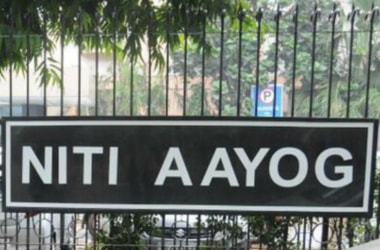 In a major push to competitive, cooperative federalism, NITI Aayog on Aug 8, 2017 launched a partnership with three States each to radically transform their Health and Education sectors. In a major push to competitive, cooperative federalism, NITI Aayog on Aug 8, 2017 launched a partnership with three States each to radically transform their Health and Education sectors.
NITI Aayog has selected Uttar Pradesh, Assam, and Karnataka to improve healthcare delivery and key outcomes in these States.
In Education, Madhya Pradesh, Odisha, and Jharkhand have been selected for support to better learning outcomes.
The six States have been chosen after a rigorous competitive process based on comprehensive metrics to determine potential for impact and likelihood of success.
States were called to, first, express intent of collaborating with NITI Aayog to better their Health and Education indices.
States then made presentations for each sector which was assessed by a committee comprised of senior members of NITI Aayog and Health and Education ministries.
The States highlighted the initiatives undertaken by them thus far, their willingness to accelerate improvement and justified why they should be selected for the institutional support being offered by NITI Aayog.
On thorough technical evaluation, the chosen States have committed to time-bound, governance reforms in both sectors.
A Program Management Unit to push for efficiency and efficacy in governance structures and service delivery will now be available in the six chosen States for a period of 30 months.
It is expected that these three years of focussed attention and support from the premier think tank will lead to a marked transformation and also provide a model for other States to replicate and adapt.
This three-way partnership between NITI, State Governments and a knowledge partner for each of the sectors is part of the Sustainable Action for Transforming Human Capital (SATH) initiative of NITI Aayog.
SATH by NITI Aayog: Know More
- NITI Aayog has been working to foster co-operative federalism by ranking states through health, water, education, and agricultural indices.
- However, SATH has been launched to go beyond ranking states and to handhold them in improving their social sector indicators.
- SATH is a challenging and ambitious initiative as the baseline of various indicators and parameters of education and health in the States are in public domain.
- It defines a new dimension for cooperative federalism, where NITI Aayog and its knowledge partner will actively aid implementation of their recommendations, in addition to just policy inputs.
- All stakeholders will be under pressure from the day of signing of the MOU to initiate reforms or processes which will show improvement in education and learning outcomes.
|
▼ 17 states, UTs in India ban polythene [08-9-17]
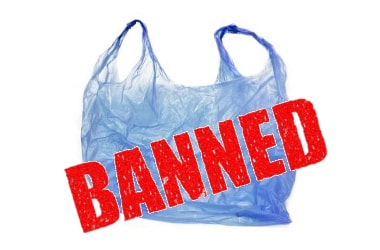 As per the provisions of Plastic Waste Management Rules, 2016, the generators of waste have been mandated to take steps to minimize generation of plastic waste, not to litter the plastic waste, ensure segregated storage of waste at source and handover segregated waste to local bodies or agencies authorised by the local bodies. As per the provisions of Plastic Waste Management Rules, 2016, the generators of waste have been mandated to take steps to minimize generation of plastic waste, not to litter the plastic waste, ensure segregated storage of waste at source and handover segregated waste to local bodies or agencies authorised by the local bodies.
The Rules also mandate the responsibilities of local bodies, gram panchayats, waste generators, retailers and street vendors to manage the plastic waste.
The rules mandate the producers, importers and brand owners to work out modalities for waste collection system based on Extended Producer Responsibility.
In the country, 17 States / Union Territories have imposed complete ban on manufacture, stock, sale and use of plastic carry-bags, through directions/notifications and executive orders.
Further, use of plastic carry bags has been partially banned in some pilgrimage centres, tourist and historical places located in the States of Andhra Pradesh, Arunachal Pradesh, Assam, Goa, Gujarat, Karnataka, Odisha, Tamil Nadu, West Bengal, Uttar Pradesh and Uttarakhand.
The Government has notified Plastic Waste Management Rules, 2016, which, inter-alia, regulate manufacture, sale, distribution and use of plastic carry bags including carry bags of compostable plastic, and plastic sheets for packaging or wrapping applications.
The use of carry bags made from conventional plastic with thickness less than 50 micron is prohibited.
The use of plastic for packaging gutkha, tobacco and pan masala is also prohibited.
There is however, no proposal to impose ban on the use of polythene bags completely throughout the country.
|
▼ Assam declared disturbed area under ASFPA for more time [08-9-17]
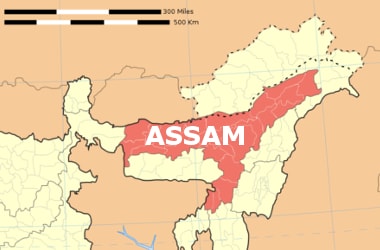 The Centre has declared entire Assam as a “disturbed” area under the controversial Armed Forces (Special Powers) Act (AFSPA) for one more month. The Centre has declared entire Assam as a “disturbed” area under the controversial Armed Forces (Special Powers) Act (AFSPA) for one more month.
This is after government cited various violent activities by insurgent groups ULFA, NDFB, and others.
The Union home ministry also declared Meghalaya’s border areas adjoining Assam, and three districts in Arunachal Pradesh as “disturbed” under the AFSPA for two more months with effect from August 3.
In separate gazette notifications, the home ministry said the entire Assam, has been declared “disturbed” under the AFSPA with effect from August 3 till August 31.
The ministry said the 20 km belt in Meghalaya bordering Assam will also continue to be a “disturbed area” under the AFSPA with effect from August 3 to September 30.
It has also declared as “disturbed” under the AFSPA three districts of Arunachal Pradesh - Tirap, Changlang and Longding - and areas falling within the jurisdiction of 14 police stations in nine other districts of the state with effect from August 4 to September 30.
The 14 police stations fall under the districts of Papumpare, West Siang, East Siang, Lower Dibang Valley, East Kameng, West Kameng, Namsai, Lohit district, Lower Subansiri in Arunachal Pradesh.
There were 75 incidents of violence in Assam in 2016 in which 33 people, including four security personnel, were killed and 14 others were abducted.
The violence were perpetrated in Assam by insurgent groups like ULFA, NDFB and others, the official said.
AFSPA has been continuing in Assam since November 1990.
There has been continuing violence perpetrated by NSCN(IM), NSCN(K), ULFA, NDFB, and others were key reasons for continuing with AFSPA in Arunachal Pradesh.
The AFSPA has been in force in the three Arunachal Pradesh districts of Tirap, Changlang and Longding since January, 2016.
Meghalaya too has been witnessing violence by ULFA, NDFB militants in the recent past.
|
▼ NCRB merges with BPRD [08-9-17]
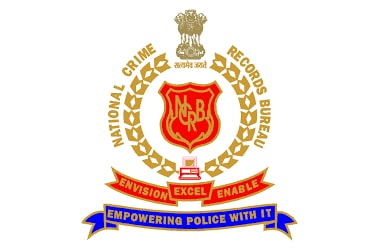 The three-decade old National Crime Records Bureau (NCRB) has been merged with another central police organisation - the BPRD by the government. The three-decade old National Crime Records Bureau (NCRB) has been merged with another central police organisation - the BPRD by the government.
This was with an aim to improve efficiency of development works related to policing.
The Union home ministry on August 4 issued an order on the merger in order to improve administrative efficiency and optimal utilisation of resources.
The BPRD Director General (DG) will be the head of the merged new entity, where the NCRB Director, an Additional DG rank post will report to the former.
The NCRB was created in 1986 as the central police organisation to collect crime data, on various parameters, from across all the states of the country.
It is also implementing the ambitious crime and criminal tracking network (CCTNS).
The BPRD, created in 1970, is the national police organisation to study, research and develop on subjects and issues related to policing.
|
▼ Swachh Survekshan Gramin 2017 to track rural sanitation [08-9-17]
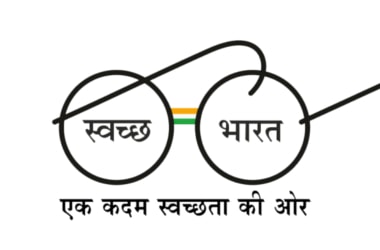 As the Swachh Bharat Mission approaches the third anniversary of its launch by the Prime Minister, Shri Narendra Modi, the Ministry of Drinking Water and Sanitation on Aug 8, 2017 launched a third party verification survey report. As the Swachh Bharat Mission approaches the third anniversary of its launch by the Prime Minister, Shri Narendra Modi, the Ministry of Drinking Water and Sanitation on Aug 8, 2017 launched a third party verification survey report.
This is to take stock of the progress already made by the Mission in rural India.
The Quality Council of India (QCI) has conducted a transparent third-party assessment of the present status of rural sanitation in all States and UTs, called Swachh Survekshan Gramin 2017.
Under the Swachh Survekshan Gramin 2017, QCI surveyed 1.4 lakh rural households across 4626 villages, and found the overall toilet coverage to be 62.45%.
At the time of the survey, i.e. May-June 2017, the Swachh Bharat Mission (Gramin) MIS reported the coverage to be 63.73%. The survey also observed that 91.29% of the people having access to a toilet, use it.
To encourage States and districts to improve their Sanitation coverage and Solid Liquid Waste Management (SLWM), the MDWS will also begin ranking all districts in India based on the data available on the SBM-G IMIS quarterly.
The ranking will be done based on parameters of Performance, Sustainability and Transparency, and the first ranking will be announced on 2nd October, 2017 for the quarter July-September 2017.
To instil healthy competition amongst districts, they will also be given awards based on this ranking on a quarterly basis. The formula for calculating these rankings will be:
Total score (100) = Performance (50) + Sustainability (25) + Transparency (25)
Further, in response to the Prime Minister’s call to the nation to Quit Filth, the Swachh Bharat Mission (Gramin) will celebrate the week leading up to the 70th Independence Day as “Khule Mein Shauch Se Azaadi” saptaah.
Highlights of this week are:
1. More than 24 States have prepared their Swachhta Action Plan for the week to reinforce their swachhta efforts by innovative methods and with community engagement.
2. On 12 August, 2017, MDWS and MoWR, RD & GR will jointly announce 24 Ganga Grams from five States, Uttarakhand (3), UP (10), Bihar (4), Jharkhand (5) and West Bengal (2) to make them Aadarsh Ganga Gram.
3. 30 SwachhtaRaths will be launched at Allahabad on August 12, 2017 in the presence of the Chief Minister of Uttar Pradesh, Union Minister of Water Resources, River Development and Ganga Rejuvenation and Shri Tomar.
4. Swachhta Raths will also be launched in other parts of the country.
MDWS is planning various Swachhta events across the country from 25th September to 2nd October 2017.
During this week, National Swachhta Awards will be given to grass root level swachhta champions, district officers, Best Pakhwada Ministries, outstanding contributions by Ministries, PSU sponsors for Swachh Iconic Places and Swachhta Action Plan.
Over 4.54 crore household toilets have been constructed since the launch of the Swachh Bharat Mission Gramin. 2,20,104 villages, 160 districts and 5 States declared ODF.
Sanitation Coverage has increased from 39% in October 2016 to 66% in August 2017.
|
▼ Mughalsarai rail junction renamed after Deendayal Upadhyaya [08-8-17]
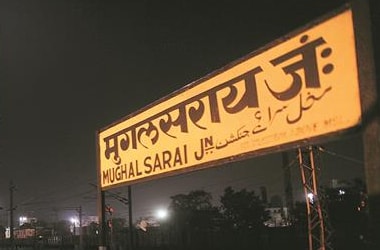 Mughalsarai railway junction in UP has been renamed after RSS ideologue and Jana Sangh leader Deendayal Upadhyaya in keeping with the “sentiments of the people”. Mughalsarai railway junction in UP has been renamed after RSS ideologue and Jana Sangh leader Deendayal Upadhyaya in keeping with the “sentiments of the people”.
In this eastern UP town, Upadhyaya's body was found lying on the tracks in 1968.
Since the 1970s, the Parivar has been referring to Mughalsarai as Deendayal Upadhyaya Nagar.
In 1992, the then BJP government had wanted to rename the station and township after Upadhyaya, along with Allahabad and Faizabad.
But that year, the Babri Masjid was demolished and Chief Minister Kalyan Singh had to quit on “moral grounds”.
In the late 19th century, the British brought the railways to India, and Mughalsarai popped up on the railway map when East Indian Railway Company laid tracks connecting Howrah and Delhi.
In the early 1880s, the Oudh and Rohilkhand Railway linked up with the East Indian Railway through the Dufferin Bridge (today Malviya Bridge) at Mughalsarai and the station became a junction
As the railways united India, Mughalsarai entered the popular lexicon. Today, it's the fourth-busiest station on the Indian Railways' network and still the last major station in UP before eastbound trains stop at Katihar Junction in Bihar.
Mughalsarai: Know More
- Mughalsarai is the birthplace of India's second Prime Minister Lal Bahadur Shastri.
- Its primary association is still with the railways with the junction is the most easily identifiable marker.
- The station contains the largest railway marshaling yard in Asia.
- It is 12.5 km long and handles around 1,500 wagons daily.
- The largest wagon repair workshop of the Indian Railways is also located.
|
▼ Bengaluru gets India's first heli-taxi service [08-7-17]
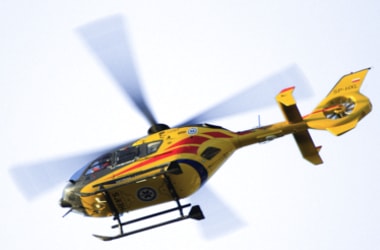 Bengaluru is all set to get India’s first dedicated helicopter-taxi (heli-taxi) service. Bengaluru is all set to get India’s first dedicated helicopter-taxi (heli-taxi) service.
Announced on 4th Aug 2017 the service, expected to take off in three months, will be operated by Thumby Aviation Private Limited. Initially, the services will be between KIA and Electronics City/
This is where a heliport is expected to come up. Estimates by the company peg the travel time at around 15 minutes.
In the Brazilian city of Sao Paulo, for instance, which is similar in size to Bengaluru, there are 300 helicopters operating as heli-taxis.
The services would be launched with one Bell 407 chopper with a seating capacity of six.
They will also look at ferrying passengers to Whitefield and to the HAL airport as well in the near future.
The prices, which are yet to be fixed, are likely to be calculated based on the interest shown.
Current fares for an air-conditioned taxi between KIA and Electronics City range between ₹1,500 to ₹2,500 for a 50-km ride.
The travel time could be 90 minutes to three hours depending on traffic. KIA is also open to supporting other companies that would like to take up similar heli-taxi services to and from the city.
The city has around 90 helipads in multi-storeyed buildings.
|
▼ Motorbike ambulance service begins in Mumbai [08-7-17]
 The Maharashtra government has launched a motorbike ambulance service to provide swift medical assistance to patients. The Maharashtra government has launched a motorbike ambulance service to provide swift medical assistance to patients.
Designed as an emergency first responder medical service, the ambulances, available through ‘108’ free helpline, have teams of paramedics providing treatment, especially in places inaccessible to larger ambulances, to patients during the golden hour.
As part of a pilot project, 10 motorbike ambulances were launched at Marine Drive in south Mumbai yesterday by Maharashtra Chief Minister Devendra Fadnavis and Shiv Sena president Uddhav Thackeray.
Motorbike ambulances will be useful in Mumbai during peak hours of traffic and in Melghat like regions where 4 wheeler ambulance can’t reach.
Under the first phase of the project, these motorbikes have been deployed in Bhandup, Malad, Mankhurd, Dharavi, Nagpada, Charkop, Goregoan, Thakur Village, Kalina and Khar- Danda.
They are being operated by BVG (Bharat Vikas Group), a leading integrated service provider.
After receiving a call at 108 control room, the nearest motorbike ambulance would be pressed into service.
After reaching the spot, the paramedic would stabilise the patient till the four-wheeler ambulance arrives to attend him/ her.
The Royal Enfield motorbikes have been converted into ambulances with emergency medical equipment.
This would be a free-of-cost service.
|
▼ SEBI constitutes fair market committee [08-4-17]
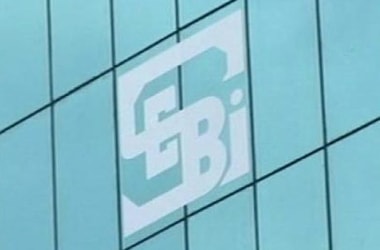 The Securities and Exchange Board of India (Sebi) has constituted a committee on ‘fair market conduct’, which will be headed by former Lok Sabha secretary and law secretary T K Viswanathan. The Securities and Exchange Board of India (Sebi) has constituted a committee on ‘fair market conduct’, which will be headed by former Lok Sabha secretary and law secretary T K Viswanathan.
The panel will have representations from Sebi, mutual funds, brokers, audit firms, stock exchanges, data analytics firms and legal firms.
The committee has been tasked with suggesting improvements to the existing Sebi norms, including on insider trading and fraudulent and unfair trade practices (FUTP).
It has been specifically asked to look at trading plans, handling of price-sensitive information during takeovers and aligning of insider-trading rules with provisions of the Companies Act.
Legal experts said as new means of communications emerge, Sebi has to stay ahead to prevent fraudulent activity.
Ensuring fair access and regulating the flow of price-sensitive information to prevent insider trading is one of the core areas for the markets regulator.
“A fair and efficient securities market stands on investor confidence. The same can be instilled by keeping the market free from manipulative practices,” Sebi said.
The committee has also been tasked with suggesting short-term and medium-term measures for improved surveillance of the markets, as well as issues of high-frequency trades and harnessing of technology and analytics in surveillance.
The committee has been given four months to submit its report.
Last month, Sebi had set up another high-profile committee under the chairmanship of Uday Kotak, managing director, Kotak Mahindra Bank, to suggest measures for improving standards of corporate governance of listed companies.
|
▼ Ex post facto approval for BRICS ARP [08-4-17]
 The Union cabinet on Aug 2 gave ex-post facto approval for a MoU between India and BRICS countries to set up a BRICS-Agriculture Research Platform (BRICS-ARP). The Union cabinet on Aug 2 gave ex-post facto approval for a MoU between India and BRICS countries to set up a BRICS-Agriculture Research Platform (BRICS-ARP).
During the 7th BRICS summit held on July 9, 2015 at Ufa in Russia, Prime Minister Narendra Modi had proposed to establish BRICS-ARP.
The centre will promote sustainable agricultural development and poverty alleviation through strategic cooperation in agriculture to provide food security in the BRICS member countries.
In order to further intensify cooperation among BRICS countries in agricultural research policy, science and technology, innovation and capacity building, including technologies for small¬holder farming in the BRICS countries, an MoU on establishment of the Agricultural Research Platform was signed by the Foreign Ministers of BRICS countries in the 8th BRICS Summit held on October 16, 2016 in Goa.
BRICS-ARP will be the natural global platform for science-led agriculture-based sustainable development for addressing the issues of world hunger, under-nutrition, poverty and inequality and enhancing agricultural trade, bio-security and climate resilient agriculture.
|
▼ India ranks 60th on Global Innovation Index [08-3-17]
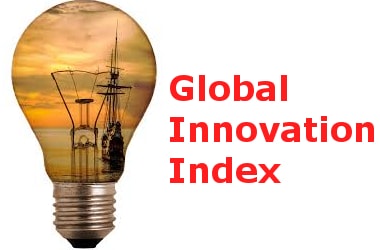 India has been ranked the top exporter of information and communication technology services in a new UN report which highlighted the rise of the country as an emerging innovation centre in Asia. India has been ranked the top exporter of information and communication technology services in a new UN report which highlighted the rise of the country as an emerging innovation centre in Asia.
The World Intellectual Property Organisation (WIPO) in its 10th edition of the ‘Global Innovation Index (GII)’ ranked India 60th on its list of 130 most innovative countries in the world.
The report, co-authored by WIPO, Cornell University and INSEAD, added that India maintains its top place in Central and Southern Asia, moving up six spots - from 66th last year to 60th this year overall.
It further said that a group of nations including India, Kenya, and Viet Nam are outperforming their development-level peers.
According to the UN agency, rich countries continue to dominate global innovation in terms of most new products and services, with Switzerland at the top for the seventh year running and high-income economies taking 24 of the top 25 spots - China is the exception at 22, moving up three places in the last 12 months.
India performed well on a number of parameters, coming on the top spot in ICT services exports, 10th in category of graduates in science and engineering, 27th on e-participation.
It also ranked 14th on the presence of global research and development companies, 33rd on government’s online service, 32nd in general infrastructure, 18th on creative goods exports, 30th on knowledge impact and 29th on intellectual property payments.
India is 2nd in innovation quality for the second consecutive year.
However in some categories it has ranked comparatively low, including 106th on political stability and safety, 121st on business environment, 114th on education.
It also ranked 104th on pupil-teacher ratio at the secondary level, 109th on use of ICT, 108th on environmental performance, 114th on ease of starting a business and 118th on ease of paying taxes.
The report said India outperformed on innovation relative to its GDP per capita for seven years in a row. India has shown improvement in most areas, including in infrastructure, business sophistication, knowledge and technology and creative outputs.
The report stated that as demonstrated in the GII for some years, India has “consistently outperformed on innovation relative to its GDP per capita. Recently it made important strides in innovation input and output performance.
“India is now in the top half of the GII rankings.
The continual improvement of India in terms of investment, tertiary education, the quality of its publications and universities, its ICT services exports, and its innovation clusters deserves mention.
GII: Know More
- Each year, the GII surveys some 130 economies using dozens of metrics.
- This ranges from patent filings to education spending providing decision makers a high-level look at the innovative activity that increasingly drives economic and social growth
- For the last ten years, it has observed an innovative capacity gap between developed and developing nations and lacklustre growth rates for research and development activities at both the government and corporate levels.
|
▼ Arvind Panagriya steps down from NITI Aayog [08-2-17]
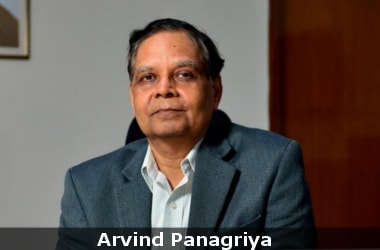 Arvind Panagariya has stepped down as Vice Chairman of the government think tank NITI Aayog. Arvind Panagariya has stepped down as Vice Chairman of the government think tank NITI Aayog.
The Columbia University professor will be returning to the US to rejoin academia.
The noted economist, who was appointed to the post by Prime Minister Narendra Modi in January 2015, has written to Mr Modi requesting to be relived by the end of the month as he has not been granted an extension of leave from Columbia University.
Mr Panagariya, 64, told reporters that he had expressed his desire to rejoin academia to the Prime Minister about two months back.
He is a Professor of Indian Political Economy at Columbia University.
His last day in office will be August 31 and he is likely to rejoin the University on September 5.
Prime Minister is the Chairman of the Niti Aayog.
Mr Panagariya holds a Ph. D in Economics from Princeton University and has also worked for the World Bank, International Monetary Fund, World Trade Organisation, and the United Nations Conference on Trade and Development (UNCTAD) in various capacities.
The economist had recently said that India’s gross domestic product (GDP) could rise to about USD 8 trillion over the next 15 years if the country registers an economic growth of 8% annually.
|
▼ NSDC, BSF sign agreement to train retirees living in border areas [08-2-17]
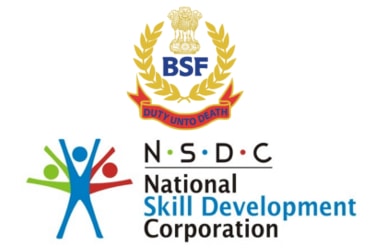 The Border Security Force (BSF) signed memorandum of understanding (MoU) with the National Skill Development Corporation (NSDC). The Border Security Force (BSF) signed memorandum of understanding (MoU) with the National Skill Development Corporation (NSDC).
The MoU will enable NSDC to provide skill training to retired and retiring BSF personnel, as well as to the population residing in the border areas.
The collaboration between BSF and NSDC aims to train and provide gainful employment to retired BSF personnel and their families, school students, youth, differently abled for five years (April 2017 to April 2022).
The programme will be appropriately named keeping in view the objectives and will have BSF co-branding with Skill India and NSDC.
It will contribute to Skill Development Agenda of the country by ensuring the successful roll out of NSQF (National Skill Qualification Framework) based skill training to the retiring or retired BSF personnel and local population.
The skill training will be based NSQF compliant training programmes at multi-skill development centres run by BSF.
This will help in meeting the aspirations of the stakeholders for training and employment. The skill training project will be of a limited to 5 years period in mission mode.
Moreover, the curriculum development and capacity building under the programme will be encouraged to enable the model to be self-sustaining over time.
About National Skill Development Corporation (NSDC)
- The NSDC is a Public Private Partnership (PPP) under the Ministry of Skill Development & Entrepreneurship.
- Its overall objective of NSDC is to create training capacity in the country; fund vocational training initiatives and create a market ecosystem for skill development.
- Its mandate is to train 150 million people by 2022.
|
▼ Swachh Survekshan 2018: First Pan India sanitation survey [08-1-17]
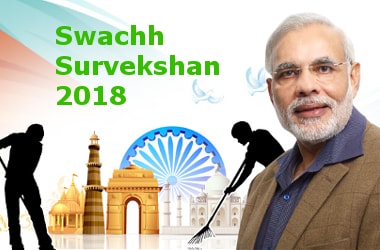 Central Government on 31st July launched ‘Swachh Survekshan-2018’ to rank all the 4,041 cities and towns of the country based on infrastructure development for improved sanitation services. Central Government on 31st July launched ‘Swachh Survekshan-2018’ to rank all the 4,041 cities and towns of the country based on infrastructure development for improved sanitation services.
It also assesses their sustainability, outcomes, citizen connect and visible impact on ground.
The survey is the third in the series.
A comprehensive Survey Tool Kit, explaining the methodology, weightages and new features and thrust areas that helps cities and towns prepare for the field survey over the next six months was also launched.
This is the first Pan-India sanitation survey that will assess sanitation levels in all the cities and towns of the country impacting the lives of about 40 crore urban people and is the largest of its kind in the world.
The surveys in 2016 and 2017 have generated substantial excitement and enthusiasm among the cities and citizens besides promoting a healthy competition among all the stakeholders, leading to expanding the scope of the survey to all urban areas of the country.
The Minister informed that the methodology and weightages for Swachh Surekshan-2018 have been modified to certain extent based on extensive consultations with city and state governments, experts and other stakeholders and in line with the progress of Swachh Bharat Mission (Urban).
The Survey Methodology seeks to capture the efforts under and outcomes of Swachh Bharat Mission (Urban).
The effort is to monitor cities move on from building toilets towards Solid Waste Management with emphasis on decentralized solutions, ensuring sustainability of improved sanitation infrastructure and services and enforcement.
Keeping in mind citizen involvement in assessing progress in sanitation and outcomes to be felt on ground, total weightage for Citizen feedback and Independent observation of sanitation have been increased by 10% over that of 2017 Survey.
To encourage cities take up innovative sanitation practices and solutions, a new element of ‘Innovation’ has been introduced this year with a weightage of 5%.
Stressing on the need for ensuring sustainability of improved sanitation levels and maintenance of the sanitation infrastructure being created, latest survey will assess availability of water connections to toilets, recovery of Operation & Maintenance costs of Community and Public toilets and SWM infrastructure through user charges, advertisement revenue.
It will also examine municipal taxes etc, liquid waste management though treatment and septage disposal, segregation of municipal waste at source, decentralized compost making by bulk generators etc. weightage for processing of solid waste has been increased by 5%.
The survey will also quantify and reward the outcomes of Notifications issued by state and city governments regarding collection of user charges, sale and marketing of compost, linking of bio-metric attendance to payroll of sanitation staff, incentivizing performance further to GPS tracking of garbage collection vehicles, maintenance of public toilets through third party etc.
Working on rigorous scrutiny of claims of cities about physical progress in improvement in sanitation infrastructure and service levels, huge negative marking in respect of all parameters in this regard has been introduced this time.
Under this, if claims of city governments are found to be incorrect by independent assessors, they will get 33% negative marks besides zero marks in respect of such parameters.
The 4,041 cities and towns to be covered under Swachh Survekshan-2018, results of which will be announced in March next year, include 500 with a population of one lakh and above each and state capitals and 3,541 with population below one lakh each.
For these 3,541 towns, State and Zonal rankings will be announced besides national rankings for the other 500 cities and towns.
Under this survey, cities will be ranked based on 71 sanitation related parameters with different weightages for a total of 4,000 marks.
Total score has been doubled this time to avoid crowding of cities with very marginal differences in scores that happened in the previous survey.
Marks for each of the components of sanitation will be assigned based on rigorous assessment of claims of city governments, citizen feedback and independent observation.
As per the Survey Toolkit released today, cities and towns will prepare over the next six months before field assessment begins on the fourth of January next year with survey results scheduled to be announced on March 26, 2018.
Swachh Survekshan: Know More
- Under Swachh Survekshan-2016, 73 cities with a population of million plus each and all state capitals were ranked in which Mysuru, Chandigarh and Tiruchirapalli emerged as the cleanest cities in that order.
- In the 2017 Survey, 434 cities with a population of one lakh plus each and state capitals were assessed in which Indore, Bhopal and Visakhapatnam were the cleanest cities.
- Swachh Survekshan-2018 launched to assess sanitation in all 4,041 cities and towns of the country
- It is the first Pan-India survey to measure citizen connect with sanitation outcomes impacting lives of 40 cr people
|